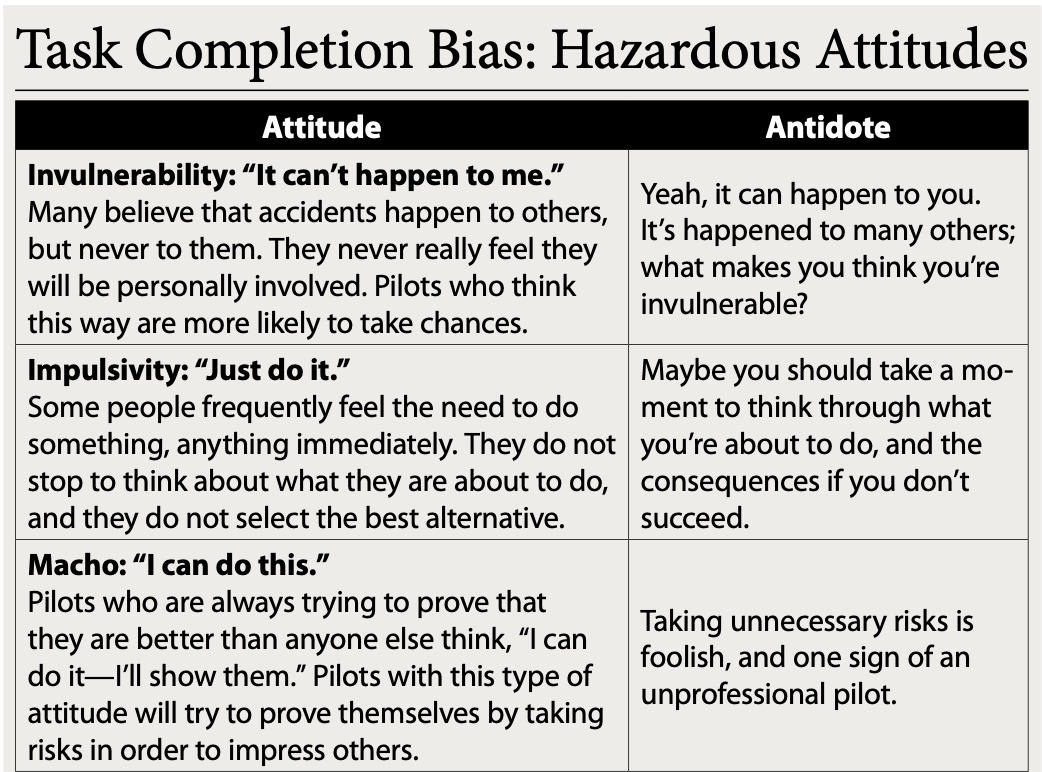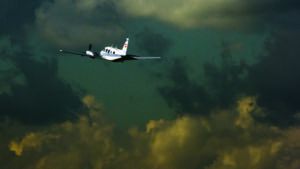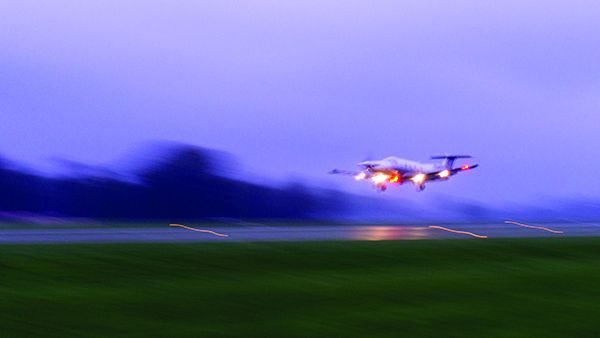You would think pilots would have learned their lesson about messing with thunderstorms, especially landing in or near them. I mean, we’re almost 40 years beyond the defining moment in understanding wind shear and microbursts, the August 1985 crash of Delta Flight 191, a Lockheed L-1011, in Dallas, Texas. Add to that, many aircraft now have wind shear alert systems, and quite a few airports offer low-level wind shear detection and warning systems (LLWAS). And even if you don’t have the luxury of some of these technologies, you probably have access to weather radar data, either from an onboard system or datalink, and even on your cellphone or tablet. There really aren’t many excuses left to paint yourself into a corner with cumulonimbus near the runway.
Yet, pilots still tend to get themselves in such a bind, with some being “lucky” enough to get away with it. Others, however, find out the hard way that Mother Nature’s warning of lightning and thunder aren’t to be reckoned with, and end up somewhere other than on the runway during the landing process. The question remains, though, with so many explicit warnings—from weather books and articles to dark clouds and lightning—why do pilots keep doing such a nonsensical thing as trying to go toe-to-toe with a storm while attempting to land?

TASK COMPLETION BIAS
As if explanations for any type of aviation accident were simple, though it does appear that there are at least some common denominators as to why runway excursions and more keep happening at the hands of thunderstorms. For the most part, the reasons can be boiled down to a mix of classic aviation hazardous attitudes such as resignation, impulsivity and invulnerability. From personal experience and the many accident and incident reports I have read, the strongest enticement to do something stupid during landing is task completion bias (TCB), which you call “get-there-itis” when you want to sound experienced.
We pilots almost always finish our flights as intended. We are used to landing without incident at our destination. Rarely do we even have to go around. So it shouldn’t be surprising that we are “programmed” to complete a flight as planned.
Dissecting TCB unearths an amalgam of aviation hazardous attitudes. In part, there is quite a bit of invulnerability—indeed, most pilots are or have been lulled into thinking that nothing will happen to them since it never has (or seldom does). How many times have you heard wind-shear warnings, and it has turned out to be nothing more than a few bumps? We get accustomed to things going our way.
Impulsivity also comes into play, though more mildly than invulnerability. If we are about to land, we are almost finished with our mission at the end of our flight. Moreover, this is usually when other factors crop up, such as running low on fuel, getting home or to bed, and probably the end of a long day. So the thoughts of, “If we hurry, we can do this,” or, “Oh, why not?” or, “Just do it,” come to mind. Resignation also jumps in for its share—“What the heck else can we do?!?” or, “It’s too late to go elsewhere,” or, “We’re committed to land already.” Put it all together, and it’s a potent ambrosial mix of enticement to keep going. The sidebar at right has some additional details.
Another facet of TCB is tunnel vision. All of the senses tend to be vulnerable to being desensitized. It’s that age-old, “You see what you want to see,” and, “Hear what you want to hear,” or maybe, “Not hear what you do not want to hear.” Let’s be honest; when there is a thunderstorm close enough to affect the winds on the field or when hard-hitting heavy precipitation begins spewing from the bottom of dark clouds, one can reasonably ask, “Why the heck are you even thinking about landing in these conditions?” But hindsight is 20/20. When in the thick of things, humans can make dumb decisions. Let’s take a look at a few examples and pick out key warning signs that went unheeded.

CHAIN OF EVENTS
Exhibit A is an example of a building chain of events that each could have been an excellent warning to start planning on alternatives or just calling it quits and going elsewhere. According to a 2018 NASA ASRS report, the pilots stated that they “had high workload under degrading IMC night weather conditions with thunderstorms, heavy rain, and moderate turbulence, coupled with a change in arrival, descending at non-published to published speeds, and 3 runways changes. The last runway change was given below 10000 feet, under heavy rain and moderate turbulence.” Not sounding so good, eh? Disappointingly, there was no mention made about the use of the onboard radar to determine the suitability of the approach corridor or the airport itself. At this point, winds were already gusting to 25 knots.
As the EMB-145 descended through 2000 feet, the aircraft was hit by lightning. Yep, you heard that right. Hit by lightning. I know that lightning can reach out in odd directions away from a storm, but regardless of any such spectacle, you have to be pretty darned close to a storm to get hit by lightning. Too close, I’d wager to say. Again, no mention of the use of radar to assess the situation. As if things weren’t looking like “it’s time to go around” already, the aircraft encountered heavy rain, a stiff crosswind and a runway with standing water. A recipe for disaster? Yep. Luckily, in this case, while the aircraft ended up having an excursion off the runway, no one was killed, and damage to the aircraft was essentially nil.

Although FAA Advisory Circular AC 00-54, “Pilot Windshear Guide,” hasn’t been updated since 1988, the wind shear recovery technique it recommends is as valid today as it was then. The upshot of it is to add full power and pitch toward an initial attitude of 15 degrees nose-up. The details:
Recognition
Recognizing the onset of a microburst-generated wind shear event is the first step. The AC recommends an unacceptable deviation includes: a 15-knot IAS increase, a 500-fpm increase in vertical speed and/or a five-degree or greater change in pitch attitude from that normally needed to maintain the desired flight path.
Power
Aggressively apply necessary thrust to ensure adequate airplane performance. Disengage the autothrottle if necessary. Don’t overboost the engine(s) unless required to avoid ground contact. When the airplane’s safety has been ensured, adjust thrust to maintain engine parameters within specified limits.
Pitch
At a normal rate, increase or decrease pitch attitude as necessary toward an target attitude of 15 degrees nose-up. Always respect stick shaker/stall warning/angle of attack indications. If attitude has been limited to less than 15 degrees for the stick shaker, increase toward 15 degrees when stick shaker stops. If vertical flight path or altitude loss is still unacceptable after reaching 15 degrees, further increase pitch attitude smoothly in small (approximately two-degree) increments until the airplane is climbing.
INADEQUATE RESPONSE
Exhibit B involves an experienced A320 crew that neglected many signals, some explicit, some implicit, each of which was probably worthy of going around but all of them as a whole made the choice to land, for lack of a better term, insane. Thunderstorms were battering the airport and its surroundings, even causing a building crane to collapse in the adjacent city, injuring over 20 people.
Enter our pilots, in no way possibly oblivious to the weather conditions, set up for approach and landing. Again, no mention of the use of weather radar to assess the local storms or to see how close the severe weather was in relation to approach and landing. In the previous several Metars, cumulonimbus were reported, and the winds were becoming more robust and variable. The Metar, at the time of the subsequent event, reported winds gusting to almost 50 knots with rain. The wind report, which was received with enough time to process and make an appropriate decision before landing (i.e., go around), indicated conditions exceeded the crosswind limits for the operation.
Even worse, 40 seconds before this report was transmitted to the crew, there was a, “Go around! Windshear ahead!” warning announced by the aircraft’s automation. The first officer rightly called for a go-around, to which the captain replied that they would continue and “wait and see,” ignoring the windshear warning. After touchdown, the aircraft exited the runway about 1500 feet from touchdown at 108 knots. The aircraft ended up crossing two taxiways and taking out three different airport signs until coming to a stop back on the runway. Luckily, no one was killed, and, as you can imagine, things could have been a lot worse.
Upon interviewing the crew following the incident, the captain stated he had significant experience landing in such conditions (hazardous attitudes: invulnerability and perhaps some macho). The captain’s ignoring both the first officer and the aircraft warnings goes against everything we know about Crew Resource Management, not to mention safety and common sense (again, some macho and invulnerability, perhaps some impulsivity, too).
‘A TAD HOT’
Last but not least is Exhibit C. In this case, a chartered Boeing 737 attempted to land at Jacksonville NAS. That day, things were busy in Florida due to a slew of thunderstorms crossing the state from northeast to southwest. According to the NTSB report, “during the approach to Jacksonville NAS, the flight crew had two runway change discussions with air traffic controllers due to reported weather conditions (moderate to heavy precipitation) near the field.”
The crew chose Runway 10, which was of ample length to accommodate the 737. However, it is an ungrooved runway. (Note: heavy rain and ungrooved runways are a poor combination.) As per the previous exhibits, there was no evidence of the use of or discussion about the onboard weather radar. By the looks of the regional radar that day, I would think such things would be on the forefront of a pilot’s mind, especially in light of the proximity of severe weather concerning the approach path and the airport.
On final approach, the aircraft was coming in a tad hot, by almost 20 knots. The aircraft started to go above the visual glide path. By all estimates, the PAPI would have been all white from around 1000 agl down to the runway. Perhaps to try to get back down on a normal approach path or due to windshear, it is unclear, the aircraft rate of descent increased above what would be considered normal (here we see some impulsivity and invulnerability, as well as an unstable approach).
As such, “eight seconds before touchdown, multiple enhanced ground proximity warning system alerts announced ‘sink rate’ as the airplane’s descent rate peaked at 1,580 fpm.” Of note was that the airplane touched down “17 knots above the target approach speed, with a ground speed of 180 knots and a rate of descent about 1,450 ft per minute.”
Other pieces of the chain of events included the captain’s failure to arm the auto-spoilers (which would deploy upon touchdown), an inoperative airplane thrust reverser, and standing water due to heavy rain. So heavy was the rain, in fact, the NTSB determined that “minutes before [touchdown] the 1-minute recorded rainfall rate was as high as 2.4 inches per hour. At 2141, about 1 minute before the accident, the 1-minute rainfall rate was 1.2 inches per hour” (note: 2.4 inches per hour equates to around 52 decibels on radar, which would show up as red while 1.2 inches per hour is right on edge between yellow and red).
The aircraft careened a bit left and right of the centerline, eventually going off of the end of the runway, over a seawall and into the adjacent river. All throughout the final moments, one has to assume that resignation was calling the shots.
LESSONS LEARNED
These accidents have a few things in common that provide guidance on what not to do when facing inclement weather during approach and landing. Number one is to discuss Plan B and even Plan C, and parameters that define when to give up on plan A. There was no evidence that any of the crews in the mishaps outlined here discussed such things. Many parameters come from company procedures and policies, but the general aviation pilot needs to have their own set of incidences that necessitate moving on from Plan A. For example, reports of lightning on or near the field, anything more than moderate rain, variable winds or strong gusts, or whatever else might apply to the aircraft type and the pilot’s experience.
Next, pilots with onboard radar or those with datalink radar should actively monitor the local weather upon arrival, then pay excruciatingly detailed attention to those sources when on approach. Anytime there is even a chance to encounter convective activity near the airport, cells should be assessed with care. General aviation pilots using datalink should know better than to mess with yellow (but especially red) when the conditions point toward possible thunderstorm activity.
ASK YOURSELF…
This takes us to the last item. If you are questioning whether to land, that should be a sign of what you probably ought not to do. In fact, before every approach and landing, you should ask yourself—why am I doing this? If your answer is “because I need to get there” or “because they have a wedding to go to,”—you are landing for the wrong reason. Don’t let TCB talk you into doing something stupid. If you think that you are landing “because I’ve dealt with conditions like this before,” it’s invulnerability doing the talking. Don’t listen.
So hopefully, we all can do our best to never allow ourselves to get suckered into attempting to land with a thunderstorm looking over our shoulders. The examples described here are only the tip of the iceberg. Be sure your next flight doesn’t end up making a list.
Dave C. Ison, PhD, has over 6000 hours of flight time, holds ATP MEL, commercial SEL/SES certificates and is an instrument and multi-engine flight instructor.




